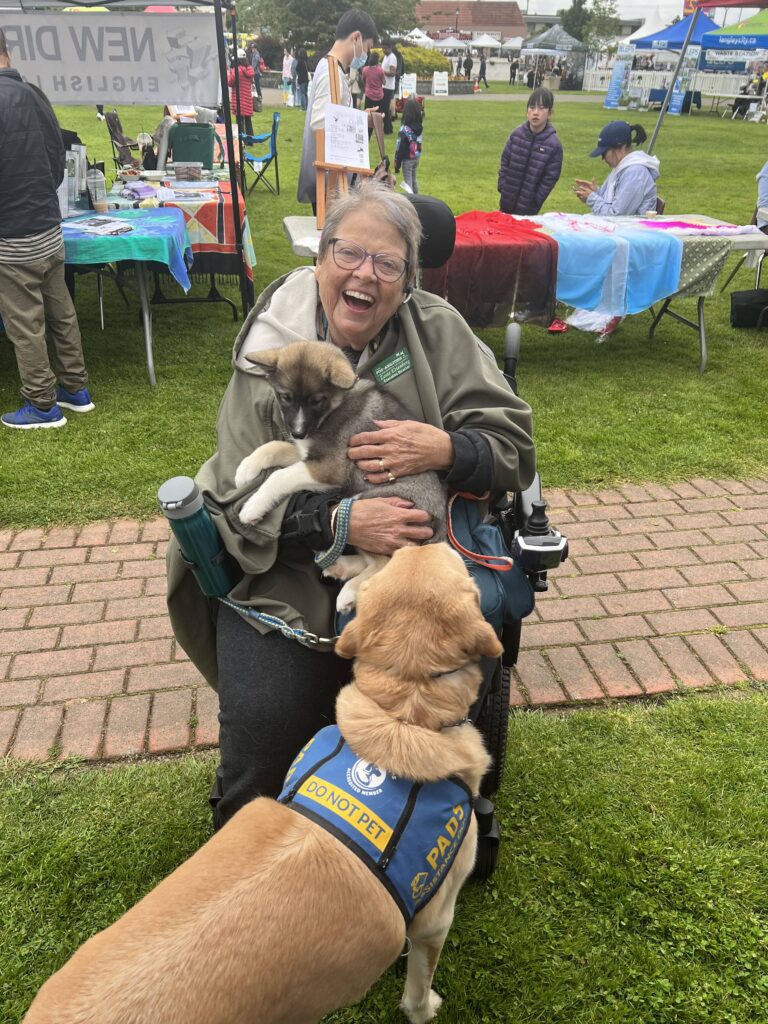How to Create an Animal Adoption Program in Your Community: Steps and Necessary Resources

The Need for Animal Adoption Programs
Each year, approximately 3.2 million animals enter shelters in the United States, which highlights a profound need for effective animal adoption programs and community outreach initiatives. These programs can play an instrumental role in not only helping to find forever homes for animals but also in fostering a kinder, more responsible culture regarding pet ownership. Without sustainable adoption pathways, countless animals face bleak prospects, making it imperative to find innovative solutions to this pressing issue.
Key Components of a Successful Adoption Program
To create a well-rounded animal adoption program, several critical factors must be taken into consideration. Below, we explore the vital components that contribute to a successful launch and ongoing operation.
- Community Engagement: Engaging local residents is essential for building a supportive community around your initiative. Host events such as adoption fairs, pet parades, or awareness workshops at local parks or community centers. Utilize social media platforms to promote these events and encourage participation. Partnering with schools for campaigns can also foster youth awareness about animal care and adoption.
- Partnerships: By collaborating with veterinary services, animal rescue organizations, and local businesses, you can leverage resources effectively. For instance, vet clinics can provide discounted or free checkups for newly adopted pets, encouraging responsible ownership. Additionally, local pet shops might be willing to sponsor events or provide supplies in exchange for promotional opportunities.
- Educational Resources: Providing educational materials about the responsibilities of pet ownership is crucial for successful adoptions. This can include pamphlets detailing basic pet care, nutrition, and grooming, as well as the importance of spaying and neutering. Workshops or online webinars about training and behavior can equip new pet owners with the knowledge they need to ensure a smooth transition into pet ownership.
Logistic Considerations
While the heart of any animal adoption program lies in community involvement, understanding the logistical components is equally vital. Building a team of dedicated volunteers can help streamline the adoption process, organize events, and manage day-to-day operations of the program. Funding plays a pivotal role as well; consider hosting fundraisers, applying for grants, or seeking sponsorships from local businesses to create a budget for necessary resources such as transportation for rescues, supplies, and veterinary care.
The Transformative Impact of Adoption
Every pet adopted represents a unique story and an opportunity for a second chance at a loving home. With commitment and passion, an animal adoption program can not only change the fate of countless animals but also enrich the community by encouraging responsible pet ownership and nurturing a culture of compassion. By diving deep into this mission, you will learn that the journey is not just about rehoming pets, but about creating lasting relationships and generating positive change.
So, take the leap! Explore the various aspects of establishing an animal adoption program and discover how your community can thrive through compassion for animals.

LEARN MORE: Click here to ensure your pet stays healthy and happy
Strategizing the Foundation of Your Program
Creating an animal adoption program in your community involves a thoughtful approach to ensure its sustainability and impact. Start with extensive research to understand the specific needs of your local area, identifying the demographics, existing animal welfare groups, and the types of animals in the most need of homes. This foundational understanding will guide your program’s objectives and help tailor your initiatives accordingly.
1. Assessing the Community’s Needs
Begin by conducting surveys or organizing community meetings to gather insights about local attitudes toward pet adoption. You may find that many residents are unaware of the adoption process, while others might express concern regarding pet care responsibilities. By actively listening to community members, you can pinpoint gaps in knowledge and resources that your program can address. This assessment should also consider the following:
- Current Animal Population: Understand how many animals are in shelters or rescues and what types of breeds are prevalent.
- Local Attitudes: Gauge public sentiments towards adopting pets versus purchasing them, and the level of interest in fostering.
- Barriers to Adoption: Identify common obstacles that might prevent individuals from adopting pets, such as financial constraints, lack of knowledge, or misconceptions about shelter animals.
2. Building a Team
A successful adoption program is fueled by a committed team. Recruit passionate volunteers who share your vision—individuals who may have experiences in animal care, event planning, marketing, or community outreach. Establish roles based on individual strengths, ensuring every team member can contribute effectively. Here is how you can assemble your team:
- Volunteer Recruitment: Utilize local social media groups, flyers, and word of mouth to attract volunteers. Clearly define the roles and responsibilities of each position.
- Training and Workshops: Once you have a team in place, provide training sessions to ensure everyone is well-versed in the adoption process, animal care, and customer service. This training establishes a consistent experience for potential adopters.
- Building an Advisory Board: Form an advisory committee consisting of local experts in animal welfare, veterinary services, and community leaders to guide program development.
3. Securing Essential Resources
Funding is a crucial element in launching an animal adoption program. Begin by creating a detailed budget that outlines anticipated costs, such as veterinary care, supplies, and marketing efforts. Explore diverse funding sources, including:
- Grants: Look for grants specifically aimed at animal welfare initiatives available through local and national organizations.
- Sponsors: Approach local businesses to form sponsorships, offering them promotional opportunities during events in return for financial contributions.
- Fundraising Events: Organize community events like bake sales, fun runs, or pet expos to raise money and generate interest in the program.
Assembling a well-rounded foundation for your animal adoption program is a vital step that requires collaboration, creativity, and community support. By strategically engaging your community, building a dedicated team, and securing necessary resources, the groundwork for a successful program will be positioned to thrive. Your efforts can transform the narrative around animal adoption, paving the way for happier homes and strengthened community bonds.
To create an effective animal adoption program in your community, it’s essential to identify the necessary steps and resources required for its successful implementation. This section focuses on the critical components to help you get started.
Step 1: Assess Community Needs
Begin by conducting an assessment to understand the specific needs for an animal adoption program in your area. Engage with local residents, shelters, and veterinary clinics to gather insights. This information will guide you in tailoring the program to address the most pressing issues, such as abandoned pets, breed-specific problems, or an influx of stray animals. Consider creating surveys or holding community meetings to gather more data.
Step 2: Form Partnerships
Building strong partnerships is crucial. Collaborate with local animal shelters, rescue organizations, and veterinary services. By pooling resources and expertise, you can create a network that supports animal welfare effectively. These partnerships can also lead to shared marketing efforts and events, amplifying your reach and visibility within the community.
Step 3: Design a Clear Adoption Process
A well-structured adoption process is vital. Outline the steps involved, including application, screening, and approval. Make sure to include educational components to inform potential adopters about pet care responsibilities. Streamlining the adoption process not only increases efficiency but also enhances the overall experience for both the animals and their future owners.
Step 4: Increase Awareness
Utilize a variety of platforms to promote your program. Social media, local newspapers, and community events are effective channels for spreading awareness. Consider creating engaging content that highlights the success stories of adopted animals or shares tips for prospective pet parents. This not only raises awareness of the program but also fosters a positive community attitude toward adoption.
Step 5: Identify Funding Opportunities
Funding is essential for sustainability. Identify potential grants, sponsorships, and fundraising opportunities that can support your program. Local businesses may be willing to sponsor adoption events, while individuals within the community might contribute through donations. Planning a fundraising event, such as a charity walk or pet fair, can also galvanize community support and raise funds.Each of these steps provides a framework for developing a robust animal adoption program tailored to your community’s specific needs. By taking these actions, you contribute to a significant movement towards enhancing animal welfare while creating lasting changes that benefit both pets and people in your neighborhood.
DISCOVER MORE: Click here for tips on enriching your pet’s environment
Implementing Your Program: Strategies and Outreach
Once you have strategized the foundation of your animal adoption program, the next critical phase involves practical implementation. This stage encompasses the development of effective outreach initiatives to educate and engage the community about the adoption process. Creating a multi-faceted approach can significantly enhance visibility and participation, ensuring that your program reaches those most in need of the benefits it offers. Here are some essential strategies to consider:
1. Developing Marketing Materials
Effective marketing is the backbone of your adoption program. Create informative and engaging materials that convey your mission while highlighting the benefits of adopting pets from shelters. Consider producing the following:
- Brochures and Flyers: Use vibrant images and compelling language to capture attention. Include statistics on adoption rates, success stories, and the health benefits of having a pet.
- Social Media Campaigns: Utilize platforms like Facebook, Instagram, and Twitter to run campaigns. Regularly post updates about available animals for adoption, share testimonials, and engage your audience with interactive content, such as videos and live events.
- Website Development: Ensure your program has a dedicated website that can serve as a hub of information. Include details on how to adopt, volunteer opportunities, and an “Adoptable Pets” section with photographs and descriptions of each animal.
2. Engaging the Community Through Events
Hosting events is an excellent way to bring people together, raise awareness, and promote pet adoptions. Consider organizing events such as:
- Adoption Fairs: Collaborate with local shelters to host adoption fairs where potential adopters can meet animals in a friendly environment. Provide refreshments, entertainment, and educational booths on pet care.
- Workshops and Seminars: Host sessions on topics like pet training, responsible owning, and the benefits of adoption. Engaging experts to speak can enhance credibility and encourage participation.
- Community Service Days: Involve community members in volunteering opportunities at shelters, including cleaning, dog-walking, or participating in outreach efforts. This involvement can foster a connection between the community and the animals in need.
3. Creating Partnerships
Partnering with local businesses, veterinarians, and schools can further enhance your program’s effectiveness. Building these relationships creates a network of support that can amplify your reach and resources. Here’s how to initiate partnerships:
- Local Businesses: Collaborate with pet supply stores, restaurants, and parks for co-sponsored events, promoting mutual visibility while driving foot traffic. Consider offering incentive programs where businesses can donate a percentage of sales to your cause.
- Schools and Universities: Work with educational institutions to incorporate animal welfare into their curricula. Arrange student volunteer programs that lead to thorough training while educating the next generation about responsible pet ownership.
- Veterinary Clinics: Form partnerships to provide discounted or donated veterinary services for adopting families. This can lower barriers to adoption and encourage responsible pet ownership.
As your animal adoption program begins to take shape, the implementation phase is crucial for fostering community involvement and promoting animal welfare. By developing effective marketing materials, engaging in creative events, and establishing partnerships, your program can serve as a beacon of hope for animals in need while transforming public perceptions about adoption. As interest in your program grows, you will likely witness a positive shift in the community’s overall commitment to animal welfare.
DON’T MISS: Click here to learn about keeping your pets healthy
Conclusion: A Brighter Future for Animals and Communities
Creating a successful animal adoption program in your community is a rewarding endeavor that not only benefits the animals in need but also fosters a more compassionate society. By following the outlined steps—conducting thorough research, building a solid foundation, and implementing effective outreach strategies—you can craft a program that resonates with local residents. Remember, effective marketing materials, community engagement through events, and strategic partnerships are paramount to enhancing visibility and ensuring success.
As your program takes shape, it’s important to continually assess its impact and adapt your strategies to better serve both animals and potential adopters. Gathering feedback from the community can provide valuable insights and help tailor future initiatives. The heartwarming stories of adopted pets and their new families will not only serve as a testament to your hard work but will also inspire others to join the movement.
Ultimately, the goal of your animal adoption program is to create lasting change—both for the lives of the animals you save and for the individuals and families who find joy in adopting them. With dedication, creativity, and a genuine commitment to animal welfare, you can lead your community toward a brighter, more compassionate future. So, take the first step today and transform your vision into reality; the animals are waiting, and so is your community.


